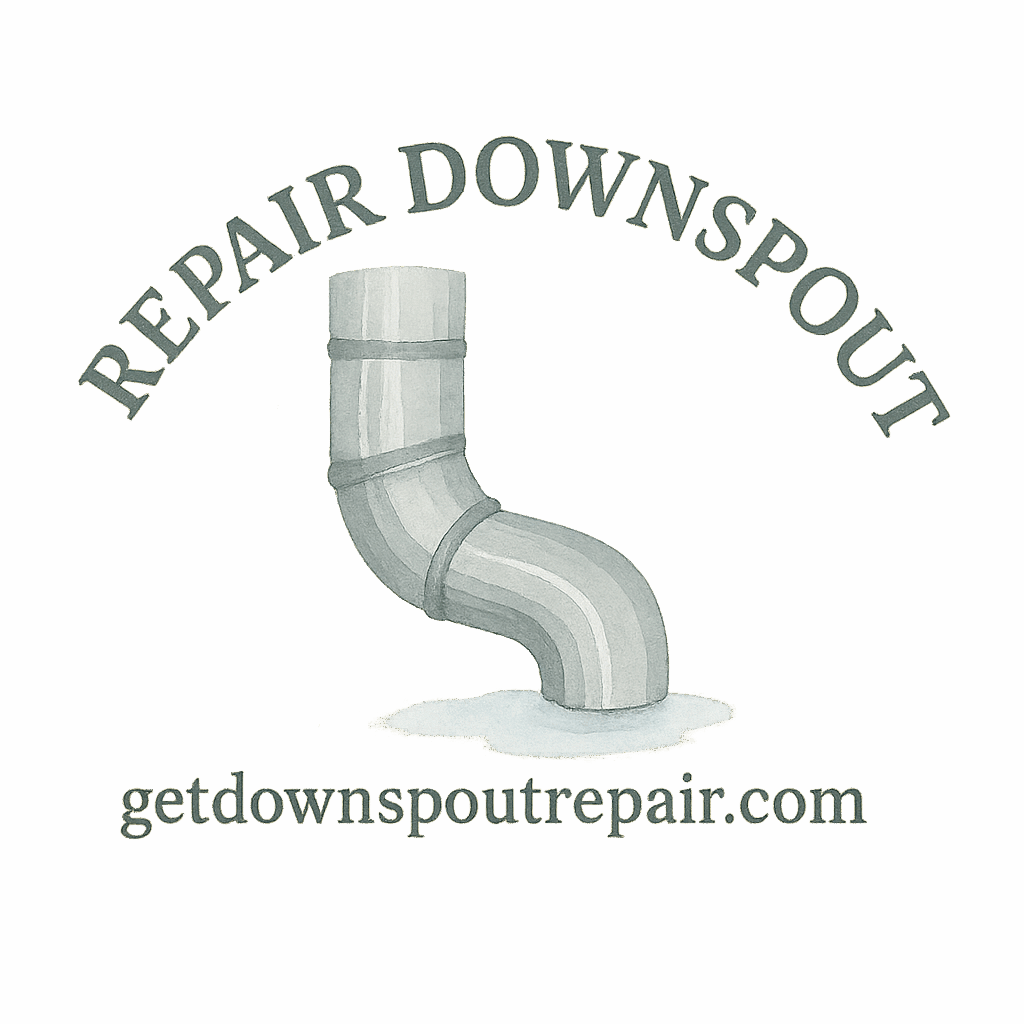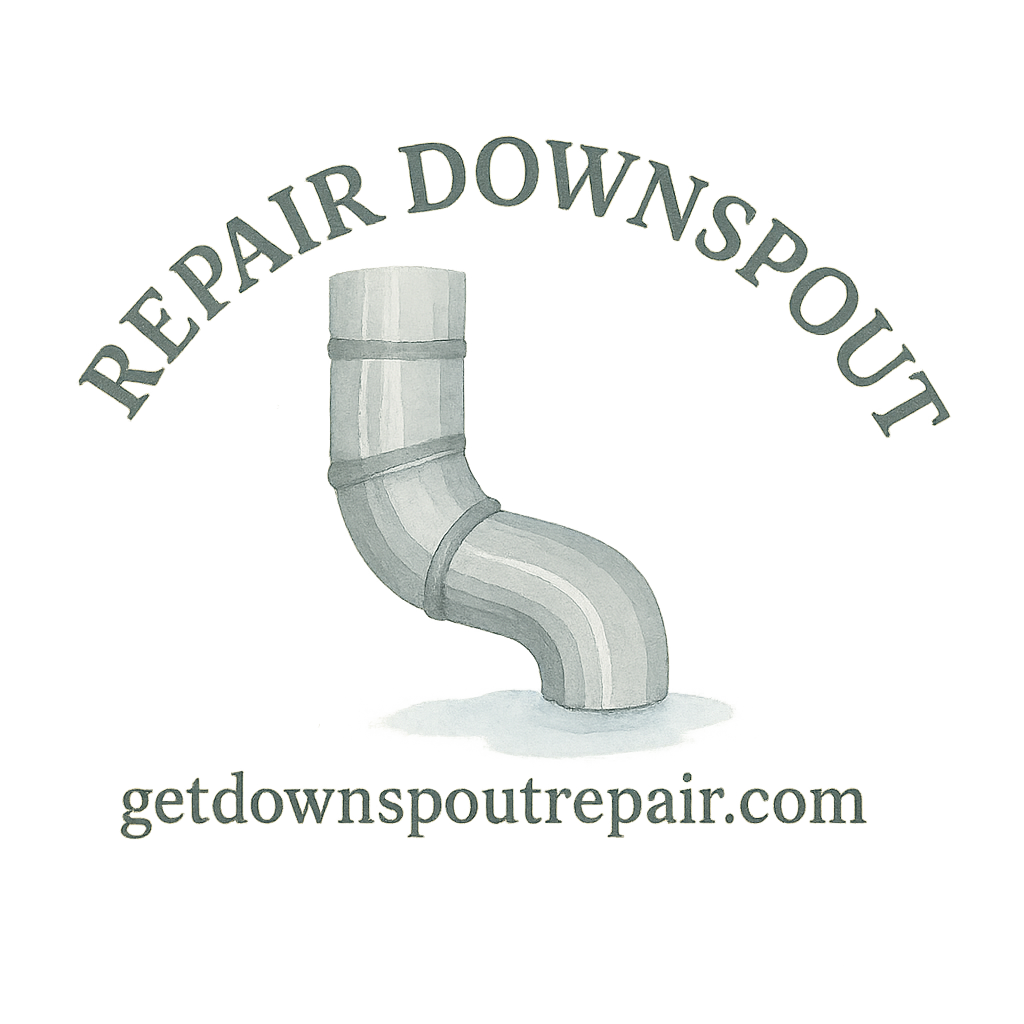Why Winter Downspout Repair Matters
When winter hits, your home takes the brunt of snow, ice, and freezing temperatures. And guess what? Your downspouts are right in the line of fire. Neglecting them can lead to frozen blockages, cracked pipes, and even water damage around your foundation. That’s why taking time now for a little DIY downspout repair can save you a ton of money and headaches later.
Think of your downspouts as your home’s drainage lifeline. If they get clogged, leaky, or misaligned during the cold months, melted snow won’t drain away properly—and that’s when problems like ice dams, basement leaks, or soil erosion kick in.
The Cost of Neglecting Your Downspout
Ignoring your downspouts can turn into a pricey mistake. Water damage repairs alone can run into thousands, not to mention structural damage to your home’s foundation. According to cost estimates, even small repairs are far cheaper than replacing an entire gutter system.
Signs Your Downspout Needs Attention
Before winter sets in, keep an eye out for:
- Water pooling near your home’s foundation
- Rust spots or peeling paint
- Loose or sagging downspout sections
- Leaks at joints or seams
- Overflow during rainstorms
If you notice any of these, it’s time to roll up your sleeves and get started.
Tools and Materials You’ll Need
DIY projects are smoother when you’ve got the right gear.
Essential Downspout Repair Tools
At minimum, you’ll need:
- Ladder (preferably with stabilizers)
- Work gloves
- Screwdriver or drill
- Sealant or caulk
- Brackets and screws
- Gutter scoop or small shovel
- Garden hose for testing
Budget-Friendly vs Premium Tools
If you’re on a budget, check out these DIY tools that get the job done without breaking the bank. But if you want long-lasting results, investing in premium tools and quality products is worth every penny.
Step 1: Inspect Your Downspout Thoroughly
The first step is a careful inspection. Look for anything out of place—cracks, dents, or loose connections.
Spotting Leaks and Cracks
Leaks may look small, but in freezing weather, they expand. Use a flashlight to check seams and corners.
Checking for Rust and Corrosion
Metal downspouts often rust over time. Rust weakens the material, making it more likely to crack under winter pressure.
Step 2: Clean Out Clogs and Debris
A clogged downspout in summer is annoying. In winter? It’s a disaster waiting to happen.
Why Clogs Are Dangerous in Winter
Leaves, twigs, and dirt trap water. When temperatures drop, that water freezes, causing blockages and added weight. This can split your downspout wide open.
For extra protection, see prevent clogging tips.
Best DIY Methods to Clear a Clog
- Flush with a garden hose
- Use a plumber’s snake
- Try a leaf blower with a gutter attachment
For beginners, gutter cleaning guides walk you through step by step.
Step 3: Seal Leaks and Small Cracks
Now that everything’s clean, let’s fix those pesky leaks.
Using Sealant for Quick Fixes
Apply waterproof sealant or gutter caulk to small holes and seams. This is a fast and affordable solution.
When to Replace Instead of Repair
If you see multiple cracks or your downspout looks like Swiss cheese, no amount of caulk will help. In that case, replacement is the smarter move. Check out the repair basics before starting.
Step 4: Reattach or Secure Loose Sections
Loose downspouts are trouble in high winds and snow loads.
Fastening Brackets and Joints
Use metal brackets and screws to secure joints. Always double-check angles so water flows down and away from your house.
Fixing Downspout Angles for Proper Flow
If the angle is too steep, water shoots out too fast. Too flat, and it pools. Find the sweet spot so water drains smoothly.

Step 5: Extend Downspout for Better Drainage
A short downspout means water pools at your foundation—never a good thing.
DIY Extensions vs Store-Bought Options
PVC pipes, flexible hoses, or store-bought extenders all work. The goal is to move water at least 5–10 feet away from your home.
Need inspiration? See these budget tips for affordable extension hacks.
Preventing Water Pooling Near Foundation
Pooling water leads to cracks, leaks, and frost heaves. A simple extension or splash block eliminates that risk.
Step 6: Protect Against Ice and Snow Damage
Snow and ice can be brutal on gutters and downspouts.
Heat Cables and Insulation Options
Wrap heat cables around trouble spots, or insulate pipes to prevent freezing.
Tips to Reduce Ice Dams Around Gutters
Keep your attic well-ventilated and install gutter guards. Check out drainage protection solutions for long-term fixes.
Step 7: Add a Splash Block or Drainage System
This step keeps melted snow and rainwater moving safely away.
Benefits of Splash Blocks
Splash blocks are inexpensive and direct water away, reducing erosion and basement flooding.
Installing Drainage Protection for Long-Term Safety
For bigger jobs, installing an underground drainage protection system ensures water never lingers near your house.
Step 8: Test and Maintain Regularly
The last step is all about consistency.
Water Testing Your Downspout Flow
Run a garden hose at the top and watch where the water goes. If it’s smooth and steady, you’re golden.
Setting a Seasonal Maintenance Routine
Mark your calendar for fall and spring checks. Consistency is the secret to avoiding costly downspout problems.
Extra Tips for DIY Downspout Repair Success
Safety Precautions to Keep in Mind
- Never climb a ladder alone
- Wear gloves and eye protection
- Avoid repairs during icy conditions
When to Call a Downspout Expert
If your system is beyond DIY, don’t wait. Contact a licensed contractor or pro help to avoid serious water damage.
Conclusion
Winter is tough, but with these 8 DIY downspout repair steps for winter protection, you can safeguard your home against costly damage. From sealing cracks to extending drainage, every small effort makes a big difference. Remember, prevention is always cheaper than repair. Stay proactive, and your home will thank you come spring.
FAQs
1. How often should I clean my downspouts in winter?
At least once before the first snowfall and again mid-season if you live in heavy snow areas.
2. Can I use regular caulk for sealing leaks?
It’s better to use waterproof gutter sealant designed for outdoor use.
3. What’s the cheapest way to extend a downspout?
A flexible drain pipe or PVC pipe is the most affordable option.
4. How do I know if my downspout is clogged with ice?
If water overflows at the seams or doesn’t drain at all, ice is likely inside.
5. Are splash blocks really necessary?
Yes—without them, water can erode soil and damage your foundation.
6. Should I DIY or call a professional?
DIY works for small repairs, but call a downspout expert if the damage is extensive.
7. Can gutter guards help in winter?
Absolutely! They reduce debris buildup, lowering the risk of clogs and ice dams.


